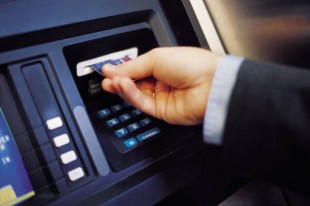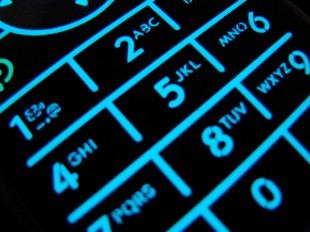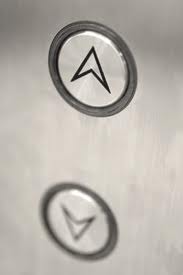Last week, I received an email forwarded by Cliff of Cliff’s List from The Game. Some of you may have received a version of the email at some point over the past few years. In it are a number of secret emergency codes for mobile phones, ATM machines, and elevators that are supposed to make life easier and safer. I’d received similar emails in the past, and always ignored them, assuming they were about as true as the email from the rich Nigerian businessman who is dying and wants you to help him distribute his money to charity.
to charity.
However, now that this blog is up, and since life-hacking is something we’re interested in here, I thought we could start a running list of everyday technology hacks—and sort out fact from fiction.
in here, I thought we could start a running list of everyday technology hacks—and sort out fact from fiction.
Starting with these seven common myths:
MYTH ONE
“If you should ever be forced by a robber to withdraw money from an ATM machine, you can notify the police by entering your PIN # in reverse. For example, if your pin number is 1234, then you would put in 4321. The ATM system recognizes that your PIN number is backwards from the ATM card you placed in the machine. The machine will still give you the money you requested, but unknown to the robber, the police will be immediately dispatched to the location. All ATM’s carry this emergency sequencer by law.”
from an ATM machine, you can notify the police by entering your PIN # in reverse. For example, if your pin number is 1234, then you would put in 4321. The ATM system recognizes that your PIN number is backwards from the ATM card you placed in the machine. The machine will still give you the money you requested, but unknown to the robber, the police will be immediately dispatched to the location. All ATM’s carry this emergency sequencer by law.”
 VERDICT: False. Spokespeople at Bank of America, Chase, Citibank, First Federal and Wells Fargo all said that this was a myth. And, really, think about it: It wouldn’t work anyway if your pin number was 1221. However this software DOES exist. According to a Forbes and CNN, Joseph Zingher is the inventor and patent holder for ATM SafetyPIN reverse pin protection software. After years of conversations with banks
VERDICT: False. Spokespeople at Bank of America, Chase, Citibank, First Federal and Wells Fargo all said that this was a myth. And, really, think about it: It wouldn’t work anyway if your pin number was 1221. However this software DOES exist. According to a Forbes and CNN, Joseph Zingher is the inventor and patent holder for ATM SafetyPIN reverse pin protection software. After years of conversations with banks and ATM providers as well as failed legislation, in April of 2010 the FTC issued a baffling report stating that even after an almost year-long study they did not come to any “definitive conclusions” on the cost effectiveness or the necessity for ATM emergency technology.
and ATM providers as well as failed legislation, in April of 2010 the FTC issued a baffling report stating that even after an almost year-long study they did not come to any “definitive conclusions” on the cost effectiveness or the necessity for ATM emergency technology.
MYTH TWO
“The Emergency Number worldwide for all Mobile Phones is 112. If you find yourself out of the coverage area of your mobile network and there is an emergency, dial 112 and your mobile will search any existing network in your area to establish the emergency number for you, and interestingly this number 112 can be dialed even if the keypad is locked. This works on all phones worldwide and is free.”
this number 112 can be dialed even if the keypad is locked. This works on all phones worldwide and is free.”
 VERDICT: Partially true. 112 is not the emergency number worldwide however it is the primary emergency number for the EU and select countries internationally. Many cell phones are programmed
VERDICT: Partially true. 112 is not the emergency number worldwide however it is the primary emergency number for the EU and select countries internationally. Many cell phones are programmed to recognize 112 as an emergency call thus calls are rerouted to local emergency services. We dialed 112 on an iPhone in Los Angeles and were rerouted to 911 emergency services (kids don’t try this at home). Other recognized emergency numbers will do the same, for example Australia’s 000 was also redirected in the same manner, however New Zealand’s 111 was not.
to recognize 112 as an emergency call thus calls are rerouted to local emergency services. We dialed 112 on an iPhone in Los Angeles and were rerouted to 911 emergency services (kids don’t try this at home). Other recognized emergency numbers will do the same, for example Australia’s 000 was also redirected in the same manner, however New Zealand’s 111 was not.
FCC regulations require handsets and networks to process 911 calls from non-registered mobiles–there is no need to be subscribed to a network or have a sim card installed–calls are free of charge. The call will in fact be routed to ANY available network. As for a locked keypad, most handsets will allow users the option of making an emergency call if the phone is locked however the phone/screen usually asks if you want to make an emergency call.
Though dialing 112 may work in many instances, the Department of State does not formally recognize this mobile functionality and strongly urges US travelers abroad to equip themselves with country specific emergency phone numbers before traveling: http://travel.state.gov/travel/.
MYTH THREE
“Have you locked your keys in the car? Does your car have remote keyless entry? …If you lock your keys in the car and the spare keys are at home, call someone at home on their mobile phone from your cell phone. Hold your cell phone about a foot from your car door and have the person at your home press the unlock button, holding it near the mobile phone on their end. Your car will unlock. Saves someone from having to drive your keys to you.”
someone from having to drive your keys to you.”
VERDICT: False. Tried it on four different types of cars. No luck. Not a surprise since remotes car unlockers work on radio signals, not audio frequencies.
unlockers work on radio signals, not audio frequencies.
MYTH FOUR
“Press the keys *3370# (remember the asterisk). Do this when the phone is almost dead. Your mobile will restart in a special way with this new reserve and the instrument will show a 50% increase in battery life. This reserve will get re-charged when you charge your mobile next time.”
VERDICT: False. Tested on three different phone models when battery was almost drained. Nothing happened. Too bad. However, just to show you how unreliable chain email myths are, on Nokia phones, typing this sequence on your phone will actually increase the DRAIN on your battery by improving the sound quality.
MYTH FIVE
“Key in the following digits on your phone: * # 0 6 # … A 15 digit code will appear on the screen. This number is unique to your handset. If your phone ever get stolen, you can phone your service provider and give them this code. They will then be able to block your handset so even if the thief changes the SIM card, your phone will be totally useless.”
VERDICT: False. The 15 digit number that appears on your screen is your IMEI Number (International Mobile Equipment Identity). US service providers only need your phone number (plus personal data for verification) to suspend your account so a thief can’t rack up charges to your account, but they do not block handsets as part of their regular service. Depending on your provider and phone model you may be able to purchase a lock feature or app for an additional charge (example: AT&T’s Mobile Protection Pack $9.00p/mon). Of course, simply locking your phone keypad with a password will have the same effect.
so a thief can’t rack up charges to your account, but they do not block handsets as part of their regular service. Depending on your provider and phone model you may be able to purchase a lock feature or app for an additional charge (example: AT&T’s Mobile Protection Pack $9.00p/mon). Of course, simply locking your phone keypad with a password will have the same effect.
MYTH SIX
“Tired of long elevator rides that stop at every floor? All elevators have an express mode that allows you to override all other stops except yours. Just press the DOOR CLOSE button and the button for your floor at the same time for a nonstop ride to your destination.”
 VERDICT: False-ish. We initially tested this at Casa del Mar and Shutters elevators in Santa Monica and the Aria, Mandalay Bay and Aliante Station hotel-casinos in Vegas and it didn’t work. Talked to at least 16 elevator industry professionals in both repair and manufacturer including the Otis Elevator Company’s corporate archivist, Stephen Showers and all of them except ONE said they knew nothing about this.
VERDICT: False-ish. We initially tested this at Casa del Mar and Shutters elevators in Santa Monica and the Aria, Mandalay Bay and Aliante Station hotel-casinos in Vegas and it didn’t work. Talked to at least 16 elevator industry professionals in both repair and manufacturer including the Otis Elevator Company’s corporate archivist, Stephen Showers and all of them except ONE said they knew nothing about this.
However, several first-hand sources swore to having done this in elevators, particularly Otis elevators. We circled back to our sources and when pressed, the Otis elevator company communications office issued the following statement: “I am writing to confirm that this is not a part of the standard operation on our elevators. We do offer a variety of solutions to customize elevator service to meet our customers’ needs including requests for express service.”
that this is not a part of the standard operation on our elevators. We do offer a variety of solutions to customize elevator service to meet our customers’ needs including requests for express service.”
We then went back to Casa del Mar and retested the hack 10 times and in ONE case–it worked.
Why?
Here’s the bottom line, paraphrased from 2 guys with over 50 years experience between them.
You know how everyone has a story about getting stuck in an an elevator, or it not stopping at their floor, or it opening between floors, or a particular elevator that is always out of service? Well, like cars, there are a ton of little imperceptible “errors” that go on with elevators and a ton of different build-in variables (i.e. people’s selections inside the car have precedence over the people outside).
So yes… it is possible that that if you press door close and your floor you will go straight to your selection due to some faulty circuitry or setting, or a combo of the two–or in the case of the rare elevator in which it has been requested as a customized setting–but don’t bank on it. The only way to guarantee truly “independent service” (control over the elevator) is with a operator key.
on it. The only way to guarantee truly “independent service” (control over the elevator) is with a operator key.
MYTH SEVEN
“Another hack that works in some elevators is if you press the wrong button, mash a bunch of buttons at the same time, and the panel will reset and you can start all over.”
VERDICT: True. It’s called an “anti-nuisance” feature and is available in most elevators manufactured after the late 80’s. You can program this feature for a elevator that services 5 or more floors.
this feature for a elevator that services 5 or more floors.
It may be important to note with elevator hacks that according to our sources, 40 – 50% older model elevators are not actually the brand stated on the chassis. Most have been restored and are running “a new engine under the hood.” (Example an Otis shell with a new Westinghouse controller.)
Have some simple tech hacking MYTHS you’ve TESTED on your own that you want to add to this list, be they True or False or somewhere in between. Leave them below in the Comments section.
*
Related Stories from The Inner Circle
Lock Picking
How To Field Dress A Deer
Part I: Do You Know How to Tie a Knot?
